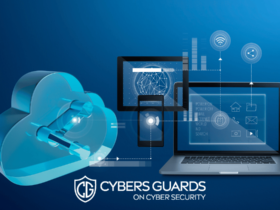Employees rely heavily on software applications to complete their work in today’s fast-paced digital world. However, in some situations, only some of these applications are officially sanctioned by the IT department.
Utilizing unsanctioned software is part of the Cyber Security risk known as “Shadow IT.” Users often embark on this risky behavior to get their jobs done more efficiently. While these applications may seem harmless to employees, they can pose significant cyber risks to corporate businesses if left unaddressed. Many organizations implement SaaS Security platforms to address this behavior, manage risk, and provide improved attack surface visibility.
What is Shadow IT Governance?
Shadow IT Governance is identifying, tracking, and managing the potential use of unsanctioned applications within an organization. These applications are often downloaded and used by employees for personal or professional reasons, but they are not monitored or controlled by the IT department. The use of these applications could potentially pose security and compliance risks to the organization, making it crucial for IT departments to implement effective governance measures.
What are the Dangers of Shadow IT for Corporate Businesses?
Security Risks
One of the main concerns with shadow IT is that it often needs more security than sanctioned software. IT departments typically have strict security protocols and standards to ensure that any software or technology used within the organization meets specific security requirements.
Shadow IT can also make the organization more vulnerable to cyber-attacks. Employees using unapproved applications may not receive regular security updates or patches, leaving their devices and data at risk of being compromised.
Compliance Risks
Organizations typically have data privacy policies to protect sensitive information from unauthorized access, use, or disclosure. These policies are designed to ensure that data is stored, processed, and transmitted securely and that it is only accessible to authorized individuals or systems.
Unsanctioned applications, however, may not meet these data privacy requirements. Unsanctioned applications may not be compliant with data privacy regulations that the organization is subject to, such as GDPR, CCPA, or HIPAA.
Lack of Integration
These kinds of applications may not integrate with other systems used by the organization. For example, an employee may use a cloud-based project management tool to manage their team’s tasks, even though the IT department has provided a different organizational project management tool. The employee’s software may not integrate with other systems used by the organization.
Increased Costs
Using unsanctioned applications can create additional security risks for the organization, leading to increased costs for IT departments. For example, IT departments may need to invest in other security measures to protect against the risks associated with unsanctioned applications, such as malware infections, data breaches, and unauthorized access to sensitive information.
Loss of Control
When employees use unsanctioned software, it can be difficult for IT departments to maintain control over the organization’s technology environment. These unauthorized applications and services may not meet the organization’s security and compliance policies, creating a risk for data breaches and cyber-attacks.
Best Practices for IT Departments to Counter Shadow IT
Educate Employees
Providing education and training on the risks associated with unsanctioned software and the importance of following the organization’s policies can help reduce the likelihood of employees using unauthorized software.
Network Traffic Monitoring
IT departments should regularly monitor network traffic to detect unauthorized software use. This can be done using various tools to help identify when employees use unsanctioned software.
Motivate Approved Software
IT departments should encourage using approved software by providing employees with easy access to these applications and tools. This can include implementing a self-service software catalog that includes approved software.
In some cases, employees may use unsanctioned software because they need access to an approved option that meets their needs. IT departments can work with employees to understand their needs and provide them with approved alternatives.
Tighten Access Controls
IT departments should implement access controls to limit access to sensitive data and systems. This can include requiring multi-factor authentication and restricting access to specific applications and data to authorized employees.
In conclusion
Shadow IT governance is a critical practice for IT departments in corporate businesses. By implementing best practices, IT departments can mitigate the risks posed by unsanctioned software and ensure the security and compliance of their organizations.










FIND US ON SOCIALS